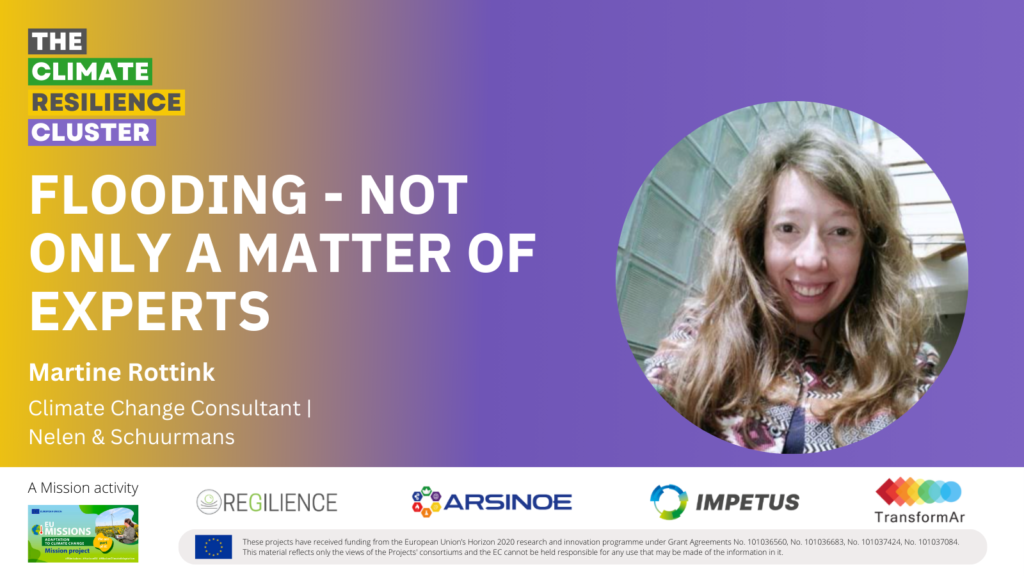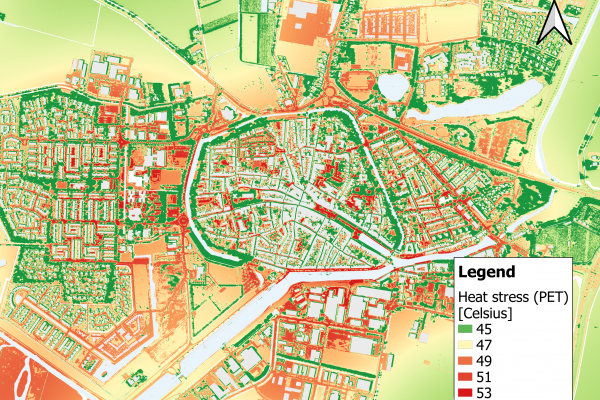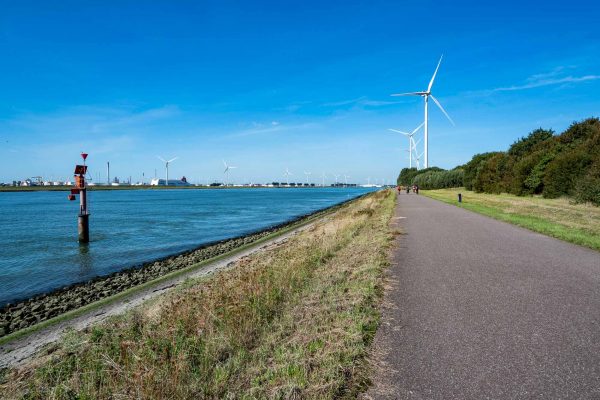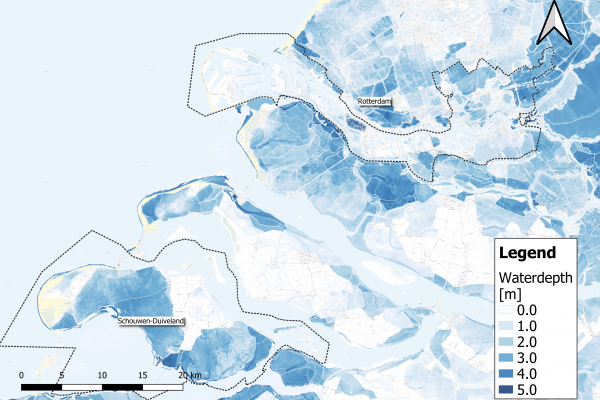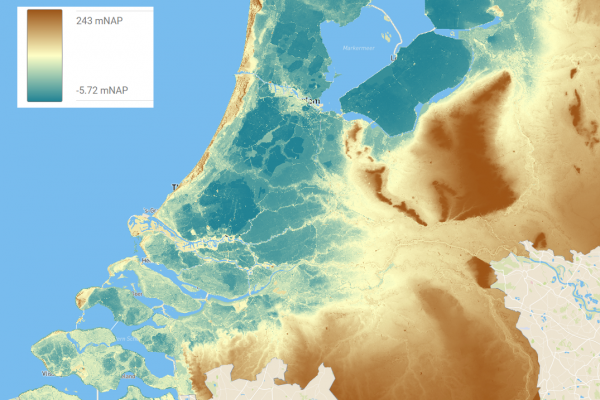In Europe, we are facing increasing flood risks under the influence of climate change. During the summer of 2021, the Netherlands, Germany, and Belgium experienced severe flood events due to heavy rainfall, resulting in significant damage and even casualties in Germany and Belgium. Due to climate change, such events are more likely to occur in the future.
Traditionally, in the Netherlands, mainly experts are involved in managing flood risks. This includes hydrologists and modelers accustomed to working with complex modelling software, calculating various flood scenarios, and visualizing them in a way that aligns with their knowledge and expertise. The emphasis here is on scientific accuracy rather than the visual aspects of flood information. For a long time, making flood risks and information understandable beyond a small group of experts has not been a focus point in the Netherlands.
Changing audience
However, this has changed over the last decade. Climate change and its associated risks should not only concern experts; everyone should be involved. This is especially true for flood risks, which can affect many people in the Netherlands, as almost 27% of its surface is located below sea level. Over the last decade, we have seen that improving the accessibility of flood information has different benefits.
First of all, it is important to prepare people for a potential flood event and make sure that they know what to do should such an event occur. In this way, the damage and especially the amount of casualties in case of a flood event will decrease. Furthermore, under the pressure of climate change, we need to take measures to protect our living environment. These measures can, in some cases, have a significant impact on the immediate surroundings. This includes, for example, inconvenience due to construction work, as well as the demolition of buildings to make room for improved flood defenses and dikes. To create support for these measures, it is important to involve people and inform them about the risks.
In the Netherlands, there has been much more attention on this in recent years. An example is the website overstroomik.nl, where everyone can enter their address and see how high the water can rise, what that means in terms of accessibility to water, energy, and internet, and how they should prepare for it. While these websites are a very positive development, they are mainly focused on actionable perspectives rather than understanding the risks. Many of these initiatives do not provide or offer limited insight into the causes of a flood and the extent to which, for example, severity may vary and change in the future due to climate change. Furthermore, flood maps are generally projected in 2D and offer little insight in terms of what a flooding actually means and looks like on the ground.
Ambitions within the IMPETUS-project
Within the IMPETUS project, we believe that besides focusing on actionable perspectives, it is important to improve the accessibility of information on the causes of flooding as well. We want to make flood risks tangible and understandable for everyone. Therefore, within this project, we focus on visualizing floods in 3D. The final goal of the project is to unlock different flood scenarios, calculated with high-level expert hydrodynamic software, in a Google Street view-like environment where you can see the water rise against the buildings. Such a Google Street view-like environment is often referred to as a digital twin and is currently being developed in an increasing number of locations. In this way we can make the high-level model simulations that are normally only used by experts accessible to everyone. This could include architects, municipal policymakers in spatial planning, or simply residents of a particular area.
Technical challenges
As one can imagine, there are different (technical) challenges involved in realizing this ambition. These challenges can be summarized in two categories. The first challenge is the need to be able to simulate different types of flooding and convert the modelling results into a format that can be ‘translated’ to a 3D visualization. Secondly, an online 3D environment is needed representing the physical environment including terrain, buildings and other objects like bridges and trees.
Flood modelling
Depending on the location to which this innovation is applied, the possible causes of a flood event can be very different. For example, in the areas of the Netherlands that are located below sea level, there is always a risk that a sea dike breaches and cause the hinterland to flood. However, flooding can also be caused by high river levels (that overtop the river dikes) or by heavy precipitation. Often, flooding occurs due to a combination of these causes. In order to capture all these causes, you need a modelling software package that incorporates all the relevant processes.
For the digital modeling of floods within the IMPETUS project, we use the 3Di software. This hydrodynamic software is based on the latest mathematical insights and can simulate the motion of water in processes such as dike breaches, rainfall run-off, infiltration, overland flow, sewerage flow, river flow, and around obstacles such as bridges, buildings, and culverts, ultimately to simulate floods. More information on the 3Di software can be found here.
In addition to this simulation software, within the IMPETUS project we developed a new result format for the model simulation results. This new format is called ‘3D-tiles’, and enables you to visualize the simulation results in 3D. The 3D-tiles are developed according to the OGC-standards. These standards are the basis for many digital geospatial developments, including different digital 3D environments. Since the 3D-tiles are developed based on these standards, it is possible to visualize the simulation results in different 3D environments.
Digital modeling of the physical environment
For the modeling of the physical environment, data of all obstacles is required, including photorealistic textures of the buildings. This data is required to create the online, Google Street View-like environment, to which the flood scenarios can later be added. Within the IMPETUS-project, we work together with different organizations that already work with such an online environment and try to link to these.
In the end, within the IMPETUS project we hope to realize an online, 3D-environment in which flood simulations can be easily visualized. Such an online environment should be easy-to-use and easy-to-understand, such that important information of flood risks is accessible to everyone!
